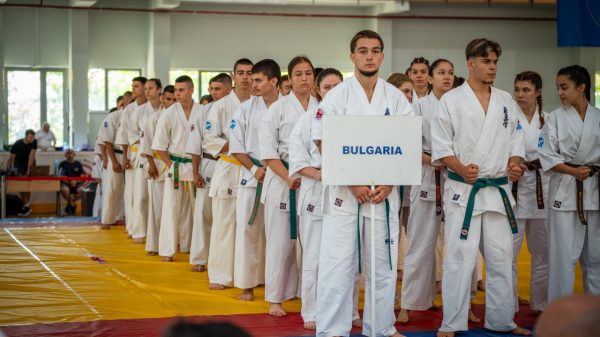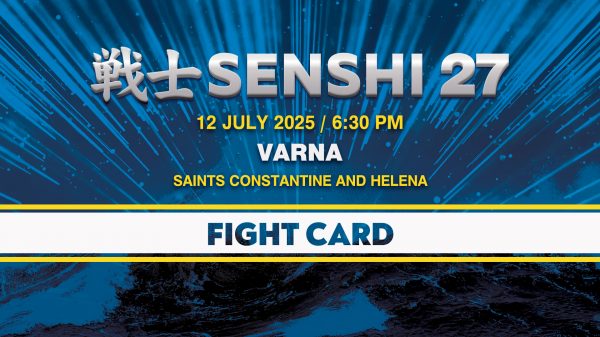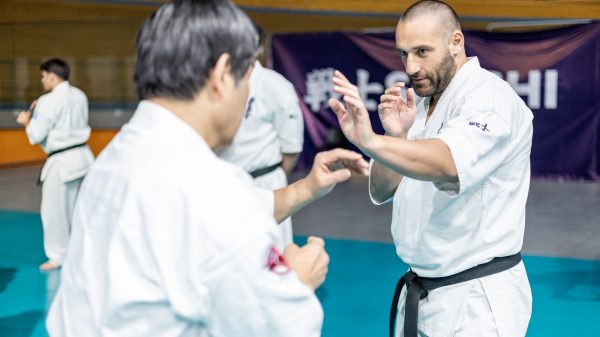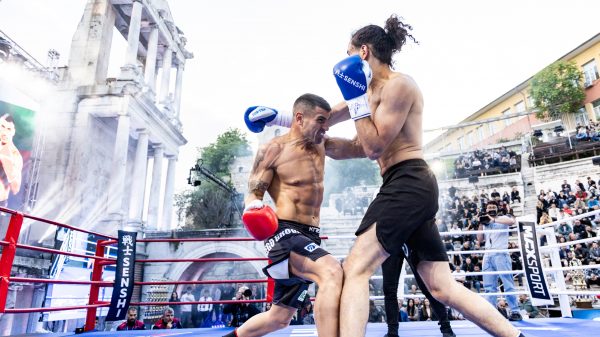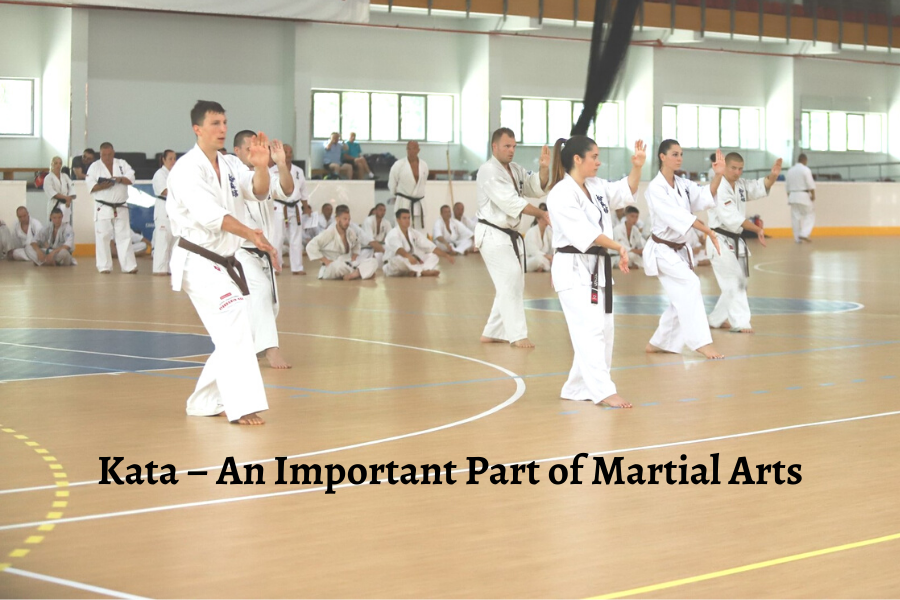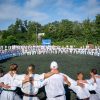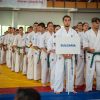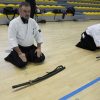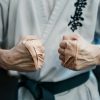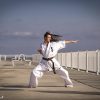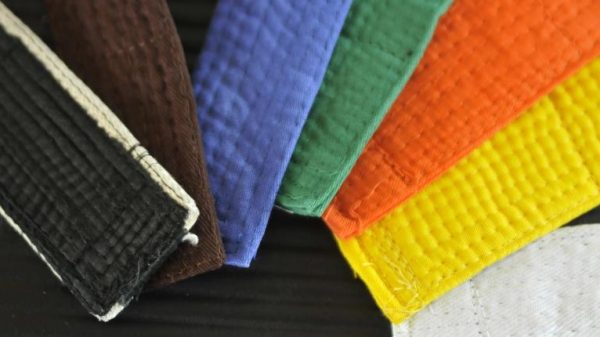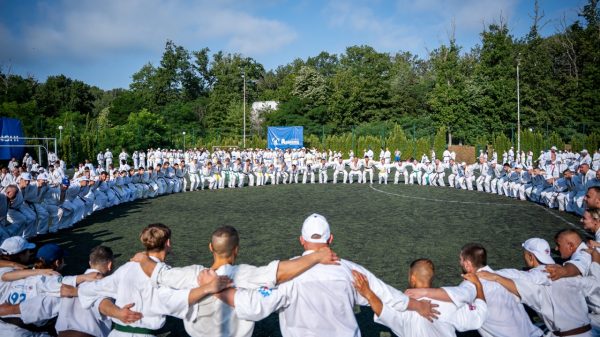Kata is a Japanese word (型 or 形) meaning “form”. It refers to a detailed choreographed pattern of martial arts movements made to be practiced alone. It can also be reviewed within groups and in unison when training.
Kata is a form of unique obligatory exercises involving a series of hand and foot techniques of punches and kicks connected by certain moving, and these movements represent a fictional fight against an imaginary opponent. Therefore kata is a defined series of striking techniques suitable for training martial arts techniques. Kata has also choreographed patterns of movements practiced either solo or in pairs (practiced is also on the team). Solo training of kata is the primary form of practice in some martial arts, such as – Japanese fencing – Iai do. In the martial skills of the East like judo, aikido, kung-fu, jujutsu, tae kwon do as well as karate, the old masters perform these exercises properly to stay in good physical condition. Some movements in kata require from the practitioner an exceptional balance, the others endurance, and breathing control. By practicing various kata one used to reach universality, or to exercise different striking techniques and keep good physical condition.
The first well-known kata included Indian ways of fighting eg. nata and vajramushti (lightning fast), the original predecessors of popular yoga exercises that the Indian monk Bodhidharma rearranged and completed with the movements of Chinese combat style, so-called chi-chi. These exercises were formed in order to develop body fitness, raising concentration as well as punch strength of the monks. He completed the exercises in 18 techniques. The essential part in kata has always been the technique and rhythm of breathing, which was indicated by Bodhidharma himself. By exercising kata the practitioner had to be filled with a kind of peacefulness, determination, with controlled performing in the strength and speed of the movements enriched with the harmony of techniques of certain martial art. Breathing is here a very important link between physical and mental moves. For each kata, there has – bunkai or certain techniques contained in them. Especially performed kata for beginners or for masters. Although we should stick to certain rules in teaching katas, many masters violate these rules (they determine the number and order of teaching katas).
In judo kata (form) is an exercise that consists of a number of throwings and grips which are performed in strict order accompanied by a strictly regulated ceremonial. There are seven classic kata and one extra for women, but since 1960 there has also been a kata for self-defense. Recently some masters have been performing even eleven katas.
In other martial arts of the East kata exercises usually include from 20 to 50 techniques of punching, kicking, and blocking that is performed according to a fixed order and movement lines. Lately, since 1965 there have been competitions in performing kata divided into two categories of exercises: so-called tough ( strong) and soft ( with gentle movements). Later, since around 1974, kata has been also performed with music. In such competitions, the judges evaluate the total impression of kata performance together with the artistic impression. Some modern forms are performed in tournaments and include gymnastics-related elements, such as backflips, cartwheels, and splits. Many modern katas can also be performed with various weapons.
It is considered that nowadays there is a huge number of various katas, but the majority of them are not generally used. Some experts think that there are 400 various katas worldwide. Most of the kata was named after some famous master from the past periods of certain martial arts. The ancient masters of martial arts created the kata as a way to pass along their knowledge to future students. Lots of masters agree that the essential kata is t’ai chi chuan (supreme ultimate boxing) in kung fu, Sanchin (meditation in motion) in karate, or the basic pinan (heian) accompanied by seven already existing in judo and five basics in tae kwon do.
List of Kyokushin Karate Katas
Kyokushin Taikyoku Sono Ichi
Kyokushin Taikyoku Sono Ni
Kyokushin Taikyoku Sono San
Kyokushin Sokugi Taikyoku Sono Ichi – One of the “Kicking” Taikyoku katas
Kyokushin Sokugi Taikyoku Sono Ni – One of the “Kicking” Taikyoku katas
Kyokushin Sokugi Taikyoku Sono San – One of the “Kicking” Taikyoku katas
Kyokushin Pinan Sono Ichi
Kyokushin Pinan Sono Ni
Kyokushin Pinan Sono San
Kyokushin Sanchin
Kyokushin Pinan Sono Yon
Kyokushin Pinan Sono Go
Kyokushin Gekisai Dai
Kyokushin Yantsu
Kyokushin Tsuki No Kata
Kyokushin Tensho
Kyokushin Saiha or Kyokushin Saifa
Kyokushin Kanku Dai or Kyokushin Kanku
Kyokushin Gekisai Sho
Kyokushin Seienchin
Kyokushin Sushiho
Kyokushin Garyu
Kyokushin Seipai
Kyokushin Ura Katas – Ura katas are very similar to the same-named non-ura Kyokushin katas (i.e. Taikyoku Sono Ichi). However, ura katas contain spins when turning.
Kyokushin Taikyoku Sono Ichi Ura
Kyokushin Taikyoku Sono Ni Ura
Kyokushin Taikyoku Sono San Ura
Kyokushin Pinan Sono Ichi Ura
Kyokushin Pinan Sono Ni Ura
Kyokushin Pinan Sono San Ura
Kyokushin Bo Katas – These katas use a Bo staff.
Kyokushin – Bo Kata Ichi
Kyokushin – Bo Kata Ni
Kyokushin – Bo Kata San
Kyokushin – Bo Kata Yon
Kyokushin – Bo Kata Go
Kyokushin – Bo Kata Roku
Kyokushin – Bo Kata Shichi or Nana
Reasons for Kata
Many Karate schools use kata in order to help students practice certain moves (i.e. kicking techniques, self-defense techniques and various strikes). In addition, kata is used to improve a student’s physical conditioning, muscle memory, focus/concentration, balance, etc. Kyokushin practitioners also believe that kata allows students to internalize offense and defensive techniques in the subconscious and “what was once memorized is now spontaneous”.
Kyokushin Kata & Mas Oyama
The founder of Kyokushin Karate, Mas Oyama, believed that kihon, kata, and kumite were the “language” and building blocks of Karate. He thought that kihon (basics) could be thought of as the “letters of the alphabet”, kata (forms) was equivalent to “words and sentences”, and the kumite (sparring) was “analogous to conversations”. Therefore, students needed to learn kihon and kata in order to be successful at kumite.





